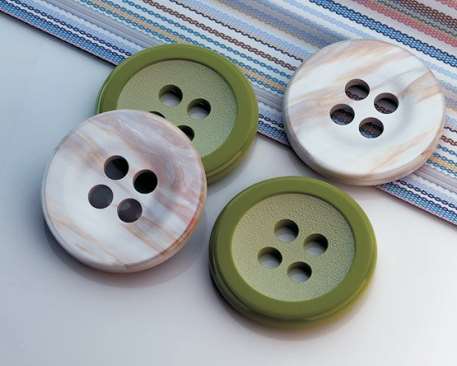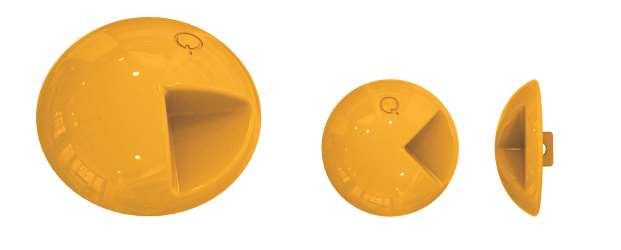Differences Between Perforated Sew-on Button and Footed Button - Blazer Jacket Button

Buttons are often considered just a small fastening tool, and we often underestimate that. In fact, there are several different types of buttons, each with their own characteristics, attributes, and purposes.
Two of the most common types of buttons are flat buttons and shank buttons, which are commonly used on various types of clothing. In this article, we will discuss the main differences between the two types and a few points to consider before purchasing.
1. Structure / Shape
Flat buttons can also be divided into two-hole and four-hole flat button types. However, the main feature between the two is that there are plains with holes in the middle. The holes are used to sew the thread to fasten the button to the garment.

On the other hand, on the back of the buttons with shank a perforated handle, which will be used to sew the thread to attach the button. Due to this body structure, knobs with handles can come in many different shapes, and this is often considered the main advantage.

2.Production Process
Due to the difference in shape, both types go through different manufacturing processes and can be produced with different materials according to the need.
Flat buttons typically go through a relatively simple manufacturing process: the material, usually plastic, is molded into the desired shape and two or four holes are added.
However, with shank switches, the process can be much more complicated due to the shaft itself, which is the hollow protruding piece. The protrusion may be a separate part fused to the button unit. In other cases, the stem may be molded directly from the button material, a common situation with buttons made of special materials such as glass or shell. Due to the more complex manufacturing process, buttons with loop are generally more expensive than flat buttons. Zamak shank buttons, when cast, are monolithic with the sewing shank button. Due to the property of the material, it does not rust, and with a smooth coating, buttons resistant to external factors are obtained. The production goal of our company is to produce durable and long-lasting products for our customers.
3.Application
Flat buttons are inexpensive and can be sewn with a sewing machine. They are often more versatile. However, flat buttons are generally not suitable for heavier garments and mixing and matching colors and shapes can be very difficult. Plain buttons are often the more common choice for formal wear because of their simplicity.
Because of their stiffer construction, shank buttons are better suited with heavier garments such as leather jackets or blazers. Plus, with a wide selection of sizes, shapes, and colors, it's easier to mix and match knobs with handles to a variety of projects.
Button Buying Tips
- First, determine your needs, especially what type of clothing you will be using. In general, shank buttons are a better choice for heavier garments.
- Note that you cannot machine sew a pommel button, so you will need to consider the extra effort and time required.





-Kalkan-Desenli-E-965-SET6-350x350.webp)